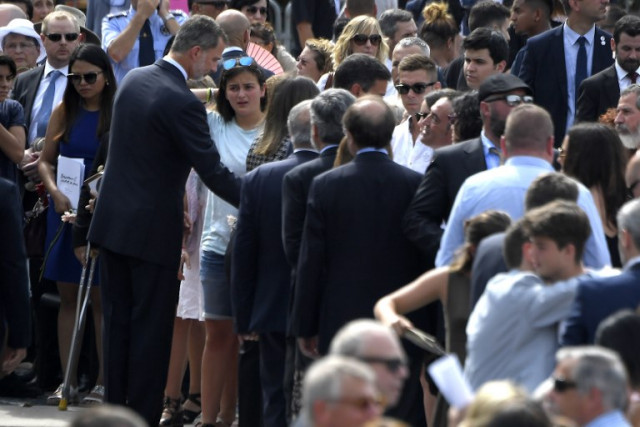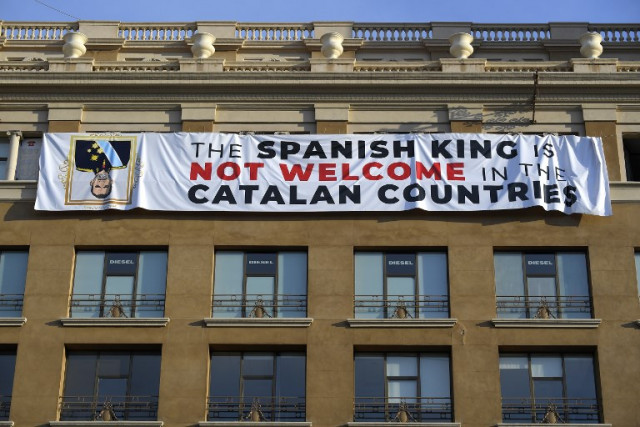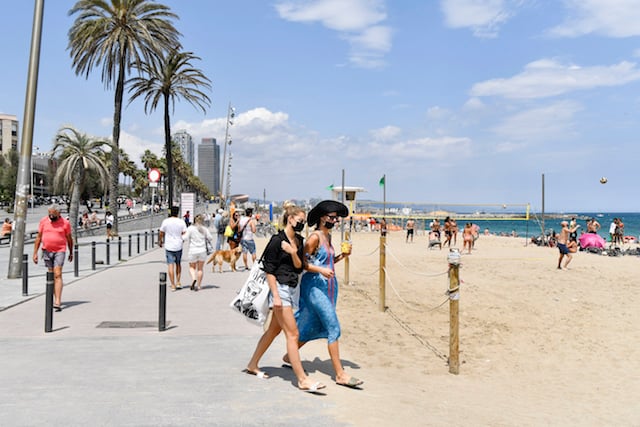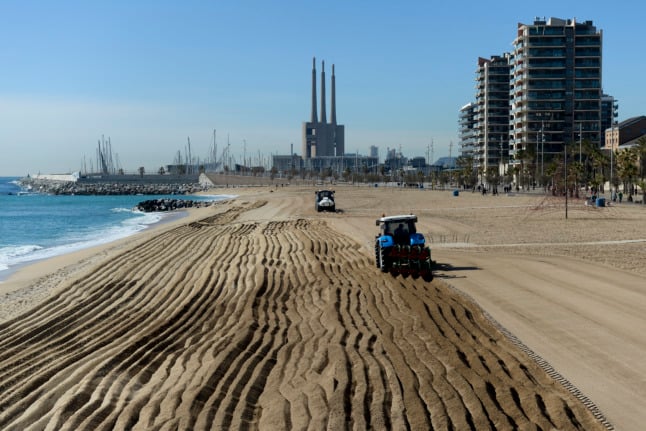Families of the victims had called for a “truce” in the political row over Catalonia's failed secessionist drive last October, which quickly overshadowed the bloody attacks that shook Spain.
But right above the spot on Barcelona's famous Las Ramblas boulevard where a van came to a stop after ploughing into and killing 14 pedestrians on August 17th, 2017, separatist activists unravelled a banner reading: “Free political prisoners. Without them this ceremony is a scam.”
Under the banner — which refers to separatist leaders in jail over the failed secession attempt — relatives of the victims laid flowers on a pavement mosaic designed by Barcelona-born artist Joan Miro.
Further up the road on the central Plaza Catalunya, another large banner hung from a building reading in English: “The Spanish king is not welcome in the Catalan countries”, with an upside-down picture of the monarch, who took a hardline stance against the secession bid.
King Felipe VI, his wife Queen Letizia and Prime Minister Pedro Sanchez joined families of the victims on the plaza for an emotional commemoration, to cries of “long live the king” and “long live Spain” by pro-unity onlookers sporting Spanish flags.

King Felipe VI greets victims and relatives during a ceremony in Barcelona. Photo: AFP
“It was a complete disgrace, such a shame. In the end others took the limelight and not the victims,” Jose Vargas, president of the Catalan association of terror victims told AFP.
Dark day for Spain
A year ago, tourists and locals in Barcelona were enjoying yet another sunny day in the city, perusing the many flower stands that line Las Ramblas.
But around 4:30 pm (1430 GMT), everything changed.
Younes Abouyaaqoub, a 22-year-old Moroccan man, drove his van into the crowds, killing 14 people, including two children aged three and seven.
Abouyaaqoub fled, stabbing to death a young man before stealing his car.
Hours later, a car carrying five of his accomplices sped into the seaside resort of Cambrils some 120 kilometres (75 miles) south of Barcelona.
The five occupants of the Audi A3 jumped out and went on a stabbing spree, killing a woman, before they were shot dead by police.
Even then, at a defiant gathering against the attacks days after they happened, the king was jeered by supporters of independence.
READ ALSO: Anti-king banner unveiled in Barcelona ahead of attacks ceremony

On Friday, separatist organisations staged their own commemorative marches to avoid being in the monarch's presence.
On Twitter, Sanchez on Friday stressed the need for “the unity of all of Spanish society”, which “makes us stronger in the face of terror and barbarism”.
La unitat de tota la societat espanyola ens fa forts contra el terror i la barbàrie. Aquest #17A i sempre, serem a Barcelona al costat de les víctimes, solidaris amb el seu dolor, units en el record. Ferms davant la desraó del terrorisme. #BCNciutatdepau, Espanya és país de PAU pic.twitter.com/wFs2rndW5q
— Pedro Sánchez (@sanchezcastejon) August 17, 2018
Catalonia's pro-independence president Quim Torra said “we emerged stronger and more united and more convinced of our principles” after the attacks.
He paid tribute to former Catalan police chief Josep Lluis Trapero and Joaquim Forn, the former regional interior minister who is in jail over the subsequent secession bid, and whom Torra described as “unjustly imprisoned”.
The Islamic State group claimed responsibility for the carnage but investigators have not found any evidence that the cell of young men who carried them out had any international links.
They believe an imam in the Catalan mountain town of Ripoll indoctrinated a group of youths of Moroccan origin.
READ ALSO: A year on, suspicion and silence in Spain jihadists' hometown
They made explosives at an abandoned house which police believe they intended to use to strike the Sagrada Familia basilica in Barcelona, the city's Camp Nou stadium or even the Eiffel Tower in Paris.
But these accidentally went off on August 16th, destroying the house, killing two of them including the imam, and prompting the remainder of the cell to improvise a vehicle attack similar to the ones carried out in other cities such as Nice and London.
By AFP's Daniel Bosque





 Please whitelist us to continue reading.
Please whitelist us to continue reading.